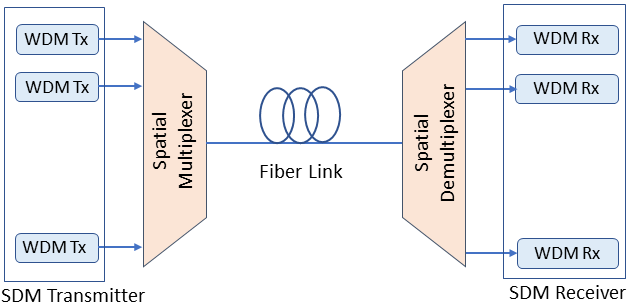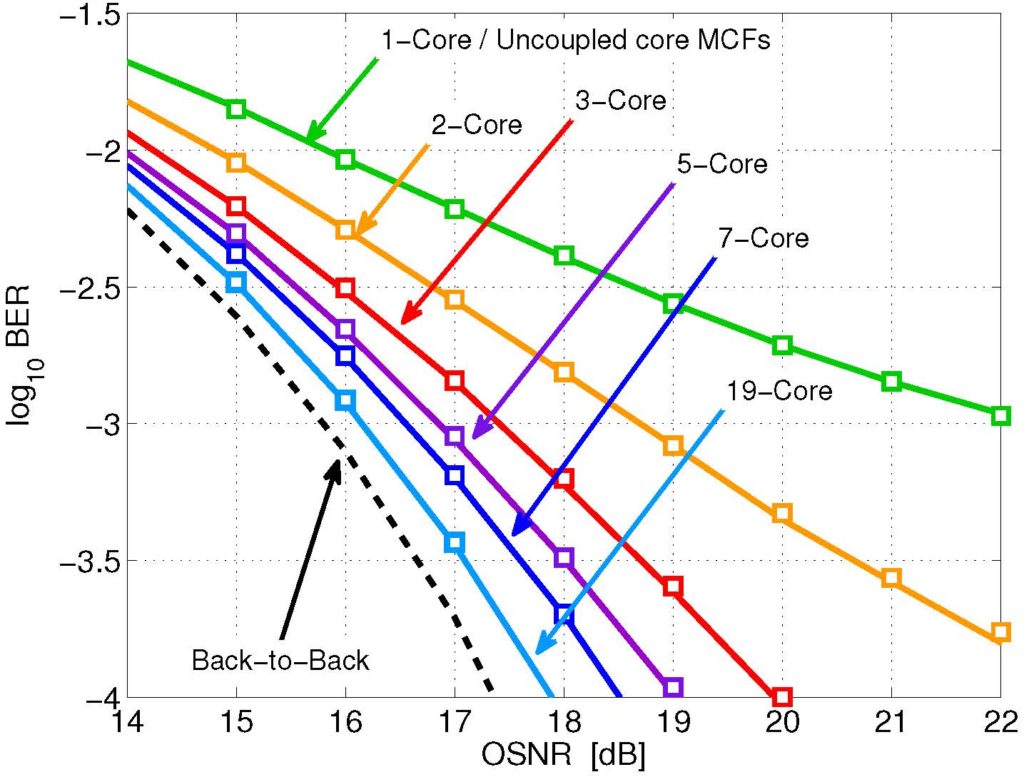Space-Division Multiplexing
Multimode and multicore fibers are attracting attention for enhancing the capacity of optical communication systems through a new type of multiplexing known as the mode-division or space-division multiplexing (SDM). A NSF-funded project in my group (grant ECCS-1505636) has focused on studying the nonlinear effects inside multimode/multicore fibers and study their impact on the performance of SDM systems. The figure below shows the SDM scheme schematically.

Simulations for Multicore SDM systems
In a 2014 study, numerical simulations were used to include both the linear and nonlinear
couplings among the cores of a multicore fiber. The simulated 1000-km-long SDM system transmitted 114-Gb/s symbol streams through each core in the QPSK format with polarization-division multiplexing (PDM). Digital signal processing was used at the receiving end to remove all linear impairments. Figure shows the calculated bit-error rate (BER) as a function of optical signal-to-noise ratio (OSNR) for fibers up to 19 cores. The increase in the OSNR at a fixed BER is called the OSNR penalty. The results indicated that linear coupling between the cores of a MCF actually improves the performance of a MCF-based SDM system. Experiments have confirmed this prediction.

2014, DOI: 10.1109/SUM.2014.96.
